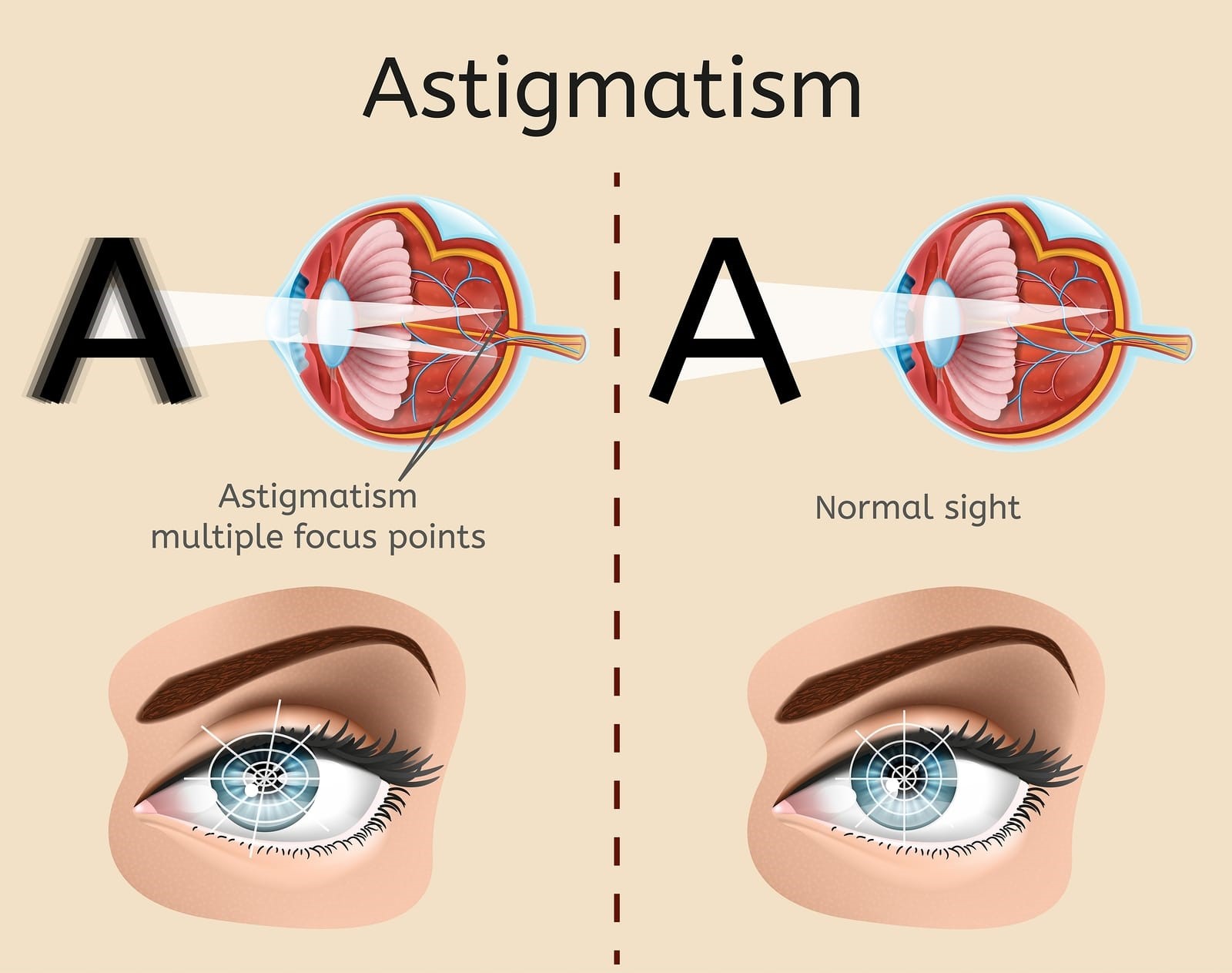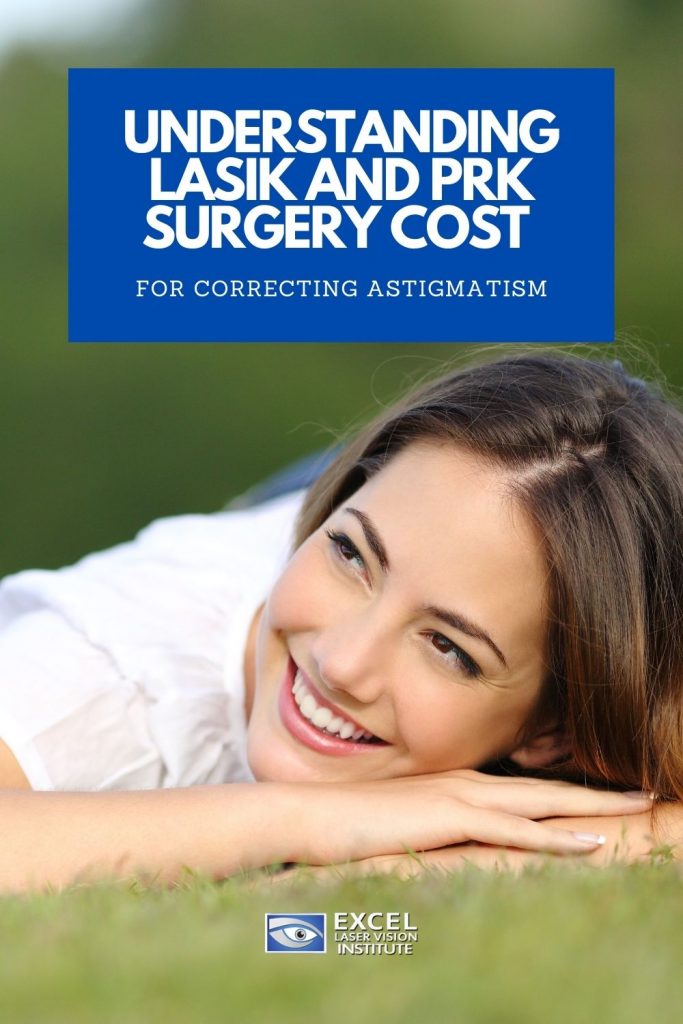
LASIK OR PRK Surgery?
Patients undergo PRK and LASIK in Los Angeles for many reasons! Most want to throw their glasses and contact lenses away for good, because they are sick of them, are constantly misplacing them, or just hate having to wear them daily and are looking into getting laser eye surgery.
Our ophthalmologists performing LASIK in Los Angeles will guide you through the most popular procedures which are LASIK and PRK eye surgery. However, you should know the differences between these two laser eye surgery methods and their benefits.

What Is PRK Eye Surgery?
PRK, or otherwise known as photorefractive keratectomy, is a type of refractive surgery at the LASIK eye center in Los Angeles. It is commonly used to correct myopia (nearsightedness), hyperopia (farsightedness) and astigmatism.
Did you know that PRK was the first type of laser eye surgery for vision correction and came before the well-known LASIK procedure? Although PRK recovery takes a tad longer than LASIK eye surgery, PRK is offered at Orange County clinics and provides advantages that LASIK cannot offer to some patients.
Similar to LASIK and other types of laser eye surgery, PRK works by reshaping the cornea using an excimer laser, which lets light enter the eye to be correctly focused onto the retina for clear vision.
What Is The Difference Between LASIK And PRK?
The primary difference between PRK and LASIK is the first part of the procedures.
During a LASIK procedure, a thin flap is created on the cornea using a microkeratome or a femtosecond laser. Then, the eye surgeon lifts the flap to reveal the underlying corneal tissue and fixes the flap back over the cornea once he or she reshapes it with an excimer laser.
On the other hand, during a PRK procedure, the thin outer layer of the cornea (epithelium) is removed and disposed of before the underlying corneal tissue is reshaped with an excimer laser. The epithelium has the ability to repair itself by growing back over the corneal surface within a couple of days after surgery.
LASEK is a variation of PRK and is also available at the LASIK clinic in Los Angeles.
Rather than discarding the outer epithelial layer of the cornea as is the case with PRK, LASEK consists of lifting the epithelial layer. The eye surgeon uses a surgical instrument called a trephine, he or she lifts the epithelial layer and preserves it during surgery and then replaces it on the eye’s surface at the end of the procedure.
What Is The Difference Between PRK And LASIK Results?
The outcome of PRK surgery in Los Angeles is similar to LASIK results, but PRK recovery is slower since it takes a few days longer for new epithelial cells to reproduce and cover the surface of the eye.
Also, there is a small possibility of an increased risk of eye infection and fuzzy vision in the first few days after surgery. Furthermore, LASIK patients usually have less discomfort, and their vision improves more quickly, whereas vision recovery with PRK is slow and the final result can take several weeks.
Although PRK is a gradual recovery, it does provide some apparent benefits.
Since PRK surgery does not require the eye surgeon to create a corneal flap, which consists of both epithelial and the deeper stromal tissues, the whole thickness of the underlying stroma is possible for treatment.
This is really important if the cornea is too thin for LASIK or if you have done LASIK in the past and that is the reason for their thinner residual cornea. Also, there is no risk of flap complications, and the risk of taking too much cornea with the excimer laser is lowered.
What Are The Advantages And Disadvantages Of PRK?
To put everything is perspective, below is a list of all the pros and cons of PRK.
Advantages
- This laser treatment doesn’t go as deep as LASIK
- Very good for patients who have a thin cornea
- No risk of corneal flap complications
- Lower risk of weakening corneal thickness
Disadvantages
- Recovery is slower than LASIK
- Optimal vision takes longer to achieve
- A higher risk of post-surgery infection, inflammation, and cloudiness
- PRK recovery is more uncomfortable than the recovery that is necessary after LASIK surgery
How Does A Surgeon Perform PRK Surgery?
The eye surgeon will first remove a central area of corneal epithelium using one of three methods: an alcohol solution, a “buffing” device or a blunt surgical instrument.
Afterward, an excimer laser is used to accurately reshape the curvature of the cornea’s surface. An excimer laser is a computer-controlled and highly specialized laser that distributes pulses of cool ultraviolet light that removes microscopic quantities of tissue in an accurate pattern.
The surgeon places a “bandage”, which is a soft contact lens on the patient’s cornea to help protect the eye. New epithelial cells regenerate in around four or five days. After that time, the eye doctor removes the bandage contact lens from the patient’s eye.
What Are The Long term Results Of PRK?
As mentioned before, PRK and LASIK outcomes are very similar. Many patients achieve 20/20 vision after the procedure, and almost all patients receive 20/40 visual acuity or better.
If you are not happy with your vision after your eyes have completely healed, you may want to have a follow-up or “enhancement” procedure to further improve your eyesight.
Alternatively, you can wear eyeglasses for specific tasks as required.
If you experience sensitivity to light after PRK, eyeglasses with photochromic lenses can offer relief.
Furthermore, if you have a slight residual refractive error after surgery, low power prescription lenses with anti-reflective coating can usually sharpen your vision for activities such as driving at night.
Post-operative PRK and LASIK complications are unusual and can comprise of infection and starbursts or halos around lights or at night.
You may find that you still require reading glasses after PRK surgery when you reach your 40s, because of age-related vision loss, which is known as presbyopia.
Although LASIK is the most popular laser vision correction surgery, you should follow your eye doctor’s advice and guidance on whether PRK or LASIK is the most suitable procedure for your requirements. If you want further information about LASIK or PRK, give Excel Laser Vision Institute a call at + (818) 907-8606 today.

Understanding the Lasik Eye Surgery Cost for Correcting Astigmatism
Laser eye surgery continues to be one of the most effective, long-term ways to correct astigmatism. However, many people still hesitate to undergo the procedure because of the Lasik eye surgery cost and PRK surgery cost. Do not be mistaken. Despite the large upfront cost of laser eye surgery, it remains one of the cost-effective alternatives to eyeglasses and contact lenses.
Plus, it can significantly improve your quality of life through its inherent advantages. If you are looking to make your life more convenient and fulfilling, then laser eye surgery can certainly play a role in that goal.
 Why Lasik is More Cost-Effective for Astigmatism
Why Lasik is More Cost-Effective for Astigmatism
Compared to the initial investment of laser eye surgery, eyeglasses and contact lenses may seem like the cheaper way to correct astigmatism. However, most people are not aware of how much they truly spend over the years with these temporary fixes:
- The cost of eyeglasses includes both the price of frames on top of the prescription. Pricing for contact lenses, on the other hand, includes the type of contacts and the kind of solution you’ll use. Expect to pay for a new set every two years since prescriptions typically change over time.
- You’ll also have to replace your eyeglasses if you lose or break them, something that many wearers are familiar with. Want a specific look for your pair? Designer eyeglasses are even more expensive than their basic counterparts.
- Over a lifetime, the cost of eyeglasses and contacts can run up to thousands of dollars, and all that without fixing your eyesight for good.
Now, the Lasik eye surgery cost and PRK eye surgery cost may look bigger upfront, but factor in the average cost of eyeglasses or contacts, and Lasik comes out as the more cost-effective alternative. Better yet, it often takes only one surgery to get rid of your astigmatism for good and give you perfect eyesight for a lifetime. So, when you think of the cost of laser eye surgery, you must think of it as an investment over time. There are ways to offset the cost with things like flexible spending accounts and health savings accounts; however, you must check your eligibility for these programs through your insurance and through the LASIK eye center.
Many LASIK and PRK eye clinics in Orange County also offer financing packages and payment plans to make the procedure more affordable, so be sure to ask your laser eye surgeon about your options for treating astigmatism.
What is astigmatism?
Astigmatism is a refractive error that occurs when the cornea, or the front of the eye, has a dual curvature.
The normal eye shape is supposed to be round, similar to a soccer ball. This allows light to enter the eye in only one ray, letting it focus on a single point at the retina (the tissue at the back of the eye that’s sensitive to light). These produce clear images for those without astigmatism.
In contrast, the eye shape of someone with astigmatism is closer to a rugby ball. The light enters in two points instead of one, resulting in fuzzy or blurred vision.
Many people live with some degree of this common condition. For most, however, mild astigmatism does not need correction since it does not cause eyesight problems. Interventions like eyeglasses, contacts, and Lasik in Los Angeles are only warranted when astigmatism causes distorted vision.
There are many LASIK eye surgery patients that come in with both astigmatism and nearsightedness or farsightedness. Prescriptions must be precise in order to fix both these refractive errors in one lens and, even then, can be imperfect. That’s why many patients appreciate the long-term effectiveness of laser eye surgery. Say goodbye to temporary frames and contacts! Say hello to clear vision!
How Lasik Works for Astigmatism
The Lasik surgeon uses a laser to correct the curvature of the eye by removing a bit of corneal tissue. The goal is to make the eye rounder so the light can focus at a single point on the retina, thus restoring clear eyesight.
Who can have laser surgery for astigmatism?
Lasik has a ground-breaking 95% success rate, better than any other elective procedure today. To determine a person’s eligibility for laser eye surgery, Lasik surgeons in Orange County refer to a list of criteria. A good candidate should:
- Have a stable prescription for one year or longer
- Have a sufficiently thick cornea
- Have pupils of the right size
- Not be pregnant
- Be in general good health
- Be 18 years old and above
After a comprehensive examination, your surgeon will be able to tell you if your degree and type of astigmatism can be improved by laser eye surgery and, if so, will be able to discuss LASIK and PRK surgery costs. Aside from astigmatism, LASIK surgery is also an excellent treatment option for myopia and farsightedness.
Benefits of Laser Eye Surgery for Astigmatism
Compared to eyeglasses and contact lenses, the advantages of Lasik eye surgery are unmatched when treating astigmatism and other eyesight issues. They include:
- Restores near perfect or perfect vision for most people
- Fast recovery time with minimal complications
- Permanent clear eyesight
- Removes the need for contacts or eyeglasses
Patients of laser eye surgery often boast having a vision that is better than they’ve ever been able to achieve with their contacts or glasses. It’s truly a life-changing procedure that can allow people the freedom of independent, unimpaired vision. Whether you’re a single parent, a freelancing artist, or a firefighter, laser eye surgery can significantly impact your quality of life. LASIK has allowed many people to follow the career, hobby, or lifestyle that they’ve always wanted to lead at an affordable price.
Are you ready to see the world with clear eyes? Schedule a consultation with one of our eye surgeons here at Excel Laser Vision Institute through our Contact Page or call us at +1 866 923 9235 for inquiries. We use the latest technology available with knowledgeable staff and a Harvard-trained surgeon at the ready. Get the vision you deserve with our LASIK and PRK specialists in Los Angeles.


